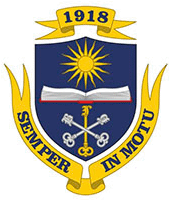On 27 January, the Voronezh Kramskoy museum opens the exhibition of Pablo Picasso’s works. The exposition includes 61 lithographs from private collections from Germany, Belgium, and France. The project is conducted by the Voronezh museum in collaboration with Periyany Ryady Art Centre from Saint Petersburg.
The exhibition shows Picasso’s works that belong to different periods of his life: the earlier period, the blue period, the period of analytic and synthetic cubism, sketches of his most famous painting, “Guernica” (1937), and his later series of works, “Toros y Toreros” and “War and Peace”. Lithographs are displayed under a specially designed glass that allows making out the finest details. An informational stand tells the visitors about the history of creation of the works, the biography of the famous painter and his creative career.
Picasso’s earlier period is represented by the series of works “Les Bleus de Barcelone”. During that time Picasso virtually lived in two cities: in Barcelona and the centre of new art at that time, Paris. His works reflected the colourful life of the French capital and his favourite themes were courting couples and café and cabaret scenes. This series includes some works from the blue period where greyish blue and dark blue colours replaced the variety of colours present in his earlier works. This period reflects the emotional distress caused by the suicide of Picasso’s close friend, Karlos Kasagemasa. The frequent themes of that period are lonely men and women, mothers with children, madmen, and old men.
The features of analytic and synthetic cubism can be seen in the series “Papiers Colles”, which translates as “paper collage”. It is not by accident that many researchers attribute the invention of the collage style to Picasso. This method allowed dividing the image into several planes, preparing objects to reveal their invisible essence.
Visitors to the exhibition can see 37 sketches for a socially and politically thorny painting “Guernica” and watch its development. In April 1937, the Nazi airforce destroyed a little Basque town called Guernica. Picasso, who was shocked by the event, created a huge painting under the same name. In 1940, soon after the Nazi invaded Paris, Gestapo officers visited Pablo Picasso. On his table there were cards with images of “Guernica”. ‘Did you do this?’ they asked Picasso about the painting. ‘No,' he said, 'you DID this!’
A separate theme are images of Picasso’s lovers. Nobody can say for sure how many of them he had. The exhibition presents a series of female portraits: beautiful faces, well-proportioned according to the rules classicism, as well as surrealistic portraits. The exhibition pays special of attention to the later post-war period, when the painter was fascinated by corrida. For example, you can bullfight in his series “Toros y Toreros”. As usual, Picasso is interested in the most dramatic moments of human life – being on the verge of life and death. The exhibition finishes with the series of works “War and Peace”, that summarises Picasso’s creative career.\
Pablo Picasso’s exhibition will open on 27 January at 4pm and will work till 26 March. The entrance fee is 300 roubles, a reduced ticket for students and senior citizens is 200 roubles and a ticket for schoolchildren is 100 roubles.
Information for this article was provided by the following website: http://m.moe-online.ru/news/view/356452.html.
Olga Gnezdilova

